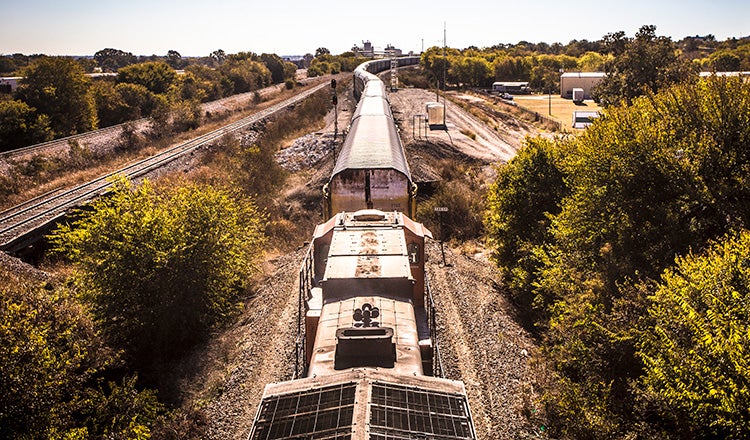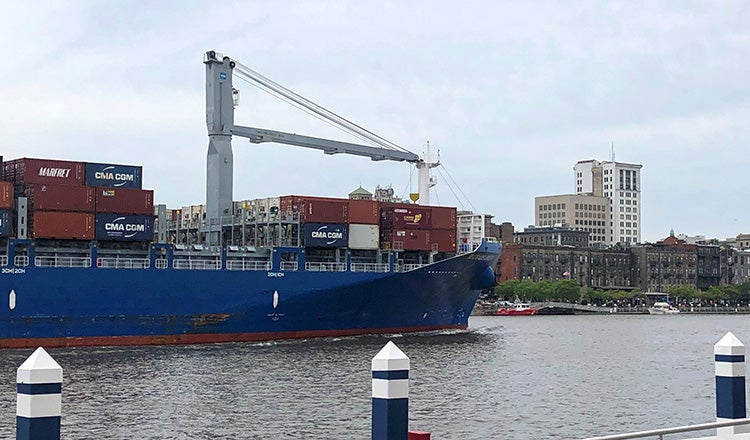
Four Strategic Considerations When Applying for Federal Railroad Discretionary Grants
Preparing a Project for Success in the Era of the Bipartisan Infrastructure Law Starts Before the NOFO Is Released
By Cat Dobbs, Kevin Keller and Fred Kramer
It seems like the process of obtaining a U.S. Department of Transportation grant for railroad improvements should be simple. A Notice of Funding Opportunity is released, an applicant matches an eligible project to that program, then prepares and submits the application materials. USDOT then evaluates and announces awards, and money starts rolling in.
The reality is much more complex. For most applicants, it is difficult to prepare the necessary documentation to USDOT standards in the allotted timeframe, then move seamlessly through obligation and award without significant up-front planning and preparation efforts. An influx of funding from the Bipartisan Infrastructure Law is creating more opportunities for railroads to access federal funds — however, with that comes more interest and competition. It’s important to develop a strategy to identify which project or projects to submit, and document the development of these projects to align with funding opportunities and priorities.
Capital Project Evaluation and Grant Readiness
In many cases, a project has the potential to achieve significant transportation and public benefits, but it is not yet ready for design-construction. While a grant applicant can opt to complete those tasks independently, some USDOT grant programs offer funding specifically for planning, conceptual or preliminary engineering and preparation of environmental reviews. If a project is early in development phases, those funds can be useful.
A competitive USDOT grant request typically requires detailed documentation supporting the project’s scope, schedule, and budget, as well as an explanation of public benefits. Once a project is awarded federal funds based on the application and project benefits, the proposed project scope, schedule and budget are what regulatory agencies expect and commit to fund.
Significant scope changes during project implementation go through lengthy reviews and approval processes as USDOT evaluates how changes in scope impact potential benefits. This reality underscores the value of having detailed project development plans prior submitting an application.
An Upfront Strategic Approach Aligned with Federal Grant Requirements
When assessing capital funding needs and potential federal funding sources, it’s critical to develop your own funding strategy to prioritize your needs and identify grant programs that best align with your project’s benefits. It’s important to identify projects that are far enough in the planning phase to produce a reliable scope, schedule and budget. Doing so puts the applicant in a position to evaluate and select the grant program best aligned with benefits and outcomes, and minimizes the potential for regulatory delays during implementation.
Document the development of project planning components such as conceptual or preliminary engineering, environmental analysis and stakeholder agreements to help expedite the grant application process and provide a thorough picture of your project approach and progress to date. The scope and schedule proposed in an application should reflect the planning work to date including any National Environmental Policy Act work and reflecting a realistic timeline.

Researching and Selecting the Appropriate Grant Opportunity
As part of your funding strategy, an initial evaluation of all available federal funding programs for a particular program or program will save you time in the end. The Notice of Funding Opportunity provides insights to program requirements, eligibilities, goals and priorities. During your initial evaluation, the applicant should consider the project’s development phase, how it is documented and whether the project aligns with the program goals and if it can be tailored to do so. Equity and environmental considerations have become key considerations for federal funding success in the new Bipartisan Infrastructure Law and should not be overlooked.
Many short line railroads are already familiar with the Federal Railroad Administration’s Consolidated Rail Infrastructure and Safety Improvements program, which funds projects that improve the safety, efficiency, and reliability of intercity passenger and freight rail. There are several additional programs to consider:
- Rebuilding American Infrastructure with Sustainability and Equity, or RAISE
- Nationally Significant Multimodal Freight and Highway Projects, or INFRA
- National Infrastructure Project Assistance program, or MEGA
- Rural Surface Transportation Grant Program, or RURAL
- Grade Crossing Improvements
- Passenger-focused programs
These programs offer significant opportunities for railroads to improve their systems beyond what the CRISI program offers.
Case study: Southeast Arkansas and Northeast Louisiana
Two short line railroads and three ports in southeast Arkansas and northeast Louisiana came together to obtain an INFRA grant in 2019 to fund railroad corridor improvements.
With HDR’s assistance, the Southeast Arkansas Economic Development District, Inc. of Pine Bluff, Arkansas, the North Louisiana & Arkansas Railroad of Russellville, Arkansas, the Lake Providence Port Commission of Lake Providence, Louisiana, the Madison Parish Port Commission of Tallulah, Louisiana, and the Delta Southern Railroad of Tallulah, Louisiana received nearly $11 million for corridor improvements to upgrade the rail infrastructure and add industrial lead tracks to better serve their clients, improve freight mobility throughout the corridor and enhance their regional competitiveness.
For this grant, the entities came together to create a larger corridor rail improvement program for federal funding consideration. The now regional project was eligible for more funding based on its overall impact in the region. We met with the USDOT early in the process to help educate the agency on the need and far-reaching benefits and worked with the agencies toward completion.
The key to success was developing a funding strategy that turned one project into a corridor improvement program that offered benefits and value beyond what could be articulated by a single local project. Establishing this regional collaboration and agreement was essential, before a federal NOFO was announced. Once we established estimated costs, what the local match would be, and how to maximize public benefits, a successful application was prepared and submitted. Today, the program is under construction.
Successful Grant Applications Tell a Compelling Story
The FRA has identified three primary areas where applications not selected for funding typically demonstrate deficiencies: the project narrative, the statement of work, and the benefit-cost analysis.
Successful applications tell a compelling story that is backed by proven need and quantifiable public benefits, as well as how the project aligns with the grant program criteria. A rigorous and credible benefit-cost analysis helps applicants prioritize projects and programs, understand trade-offs, measure benefits, evaluate risks and determine investment and policy strategies that best suit their needs. The benefit-cost analysis step provides key information to position projects and programs with the best possible business case for funding.
Strong applications often feature:
- Clear, significant and positive local or regional impact
- A specific timeline for completion that accounts for remaining project development activities, such as environmental evaluation or agreement negotiation
- A project narrative with a clear story that details the reasonable, justifiable benefits while highlighting readiness for federal investment
- Evidence of creation of good-paying jobs, safety improvements or application of transformative technology
- A consideration of climate change and racial equity in the planning and design stage
- An emphasis on improved access to reliable, safe and affordable transportation, particularly for underserved and overburdened communities
- Professional presentation and themes addressing USDOT criteria and priorities, supported by the benefit-cost analysis
- It’s not necessary for a project to align with each or achieve every criterion, rather strong applications provide objective analysis with a focus on benefits delivered.
- Easy to read text, with maps and graphics
- Political support, such as letters from lawmakers
- Key supporting data (such as avoided crashes) should be highlighted in call-out boxes, tables
And, importantly, competitive grant applications demonstrate completion of all federal requirements, including NEPA, and acknowledge the ability and capacity of the grantee to understand all applicable federal terms and conditions that will be associated with the grant award. Sometimes projects can be delivered in “phases,” or have multiple related components that each can deliver independent benefits. For these types of projects, it’s worth considering presenting the costs and benefits for different funding scenarios.
Case study: Georgia Ports Authority
The Georgia Ports Authority received four grants between 2017 and 2023, totaling $140 million for $570 million worth of work. This includes one FastLane grant, one INFRA grant and two Port Infrastructure Development Program grants.

In 2016 HDR began early work with the Georgia Ports Authority to submit a successful $44 million FastLane grant to reconfigure the Port of Savannah’s on-dock intermodal container transfer facilities to bring rail switching activities inside the port. The project includes building two arrival/departure tracks, rebuilding a bridge over new yard tracks, building two new work tracks, adding high-capacity cranes and building new storage tracks.
This and the other grants will create a measurable difference for the Port Authority and, correspondingly, the local economy.
And it all starts with preparation.
Contact Us
For assistance with developing a customized funding strategy or developing a grant application, please contact Catherine.Dobbs [at] hdrinc.com (Cat Dobbs), fred.kramer [at] hdrinc.com (Fred Kramer) or kevin.keller [at] hdrinc.com (Kevin Keller).
About the Authors

Cat Dobbs is a senior project manager and program strategist, offering expertise in NEPA, federal partnerships and grant monitoring/compliance. Before joining us, she spent nearly 12 years with the FRA's Office of Program Delivery. At HDR, Dobbs works with a wide variety of industry stakeholders providing guidance on project development and federal partnership opportunities. Specializing in the development of pre-construction project requirements, Cat assists clients with the strategic pursuit of federal funding and the development of supporting documentation. She maintains excellent working knowledge of federal environmental and granting regulations, policies and practices.

Kevin Keller is a senior railroad program manager who has served as program director on large, multidiscipline programs for transportation clients throughout North America. Keller is recognized by the USDOT, FRA, and STB as an expert in the areas of freight and passenger rail planning and development and has been invited to assist these federal agencies with the development of the National Rail Plan. He is also recognized by USDOT as an expert in NEPA and the development of federal grant and loan strategies for interested applicants. Keller is a member of the AREMA Foundation Board of Directors, former vice president of the Engineering Services Functional Group of AREMA, and former Chairman of AREMA Committee 13 (Environmental). He is a former president of the American Railway Development Association.

Fred Kramer has successfully contributed to and managed numerous economic assessments with focus on the quantification of public benefits of proposed freight rail projects. A transportation economist, his thorough understanding of decision criteria, guides the creation of business case, benefit-cost and risk analyses that help Class I and short line freight railroad clients obtain public funding. With us for the past 15 years, Fred leads our freight and passenger rail economics practice.
